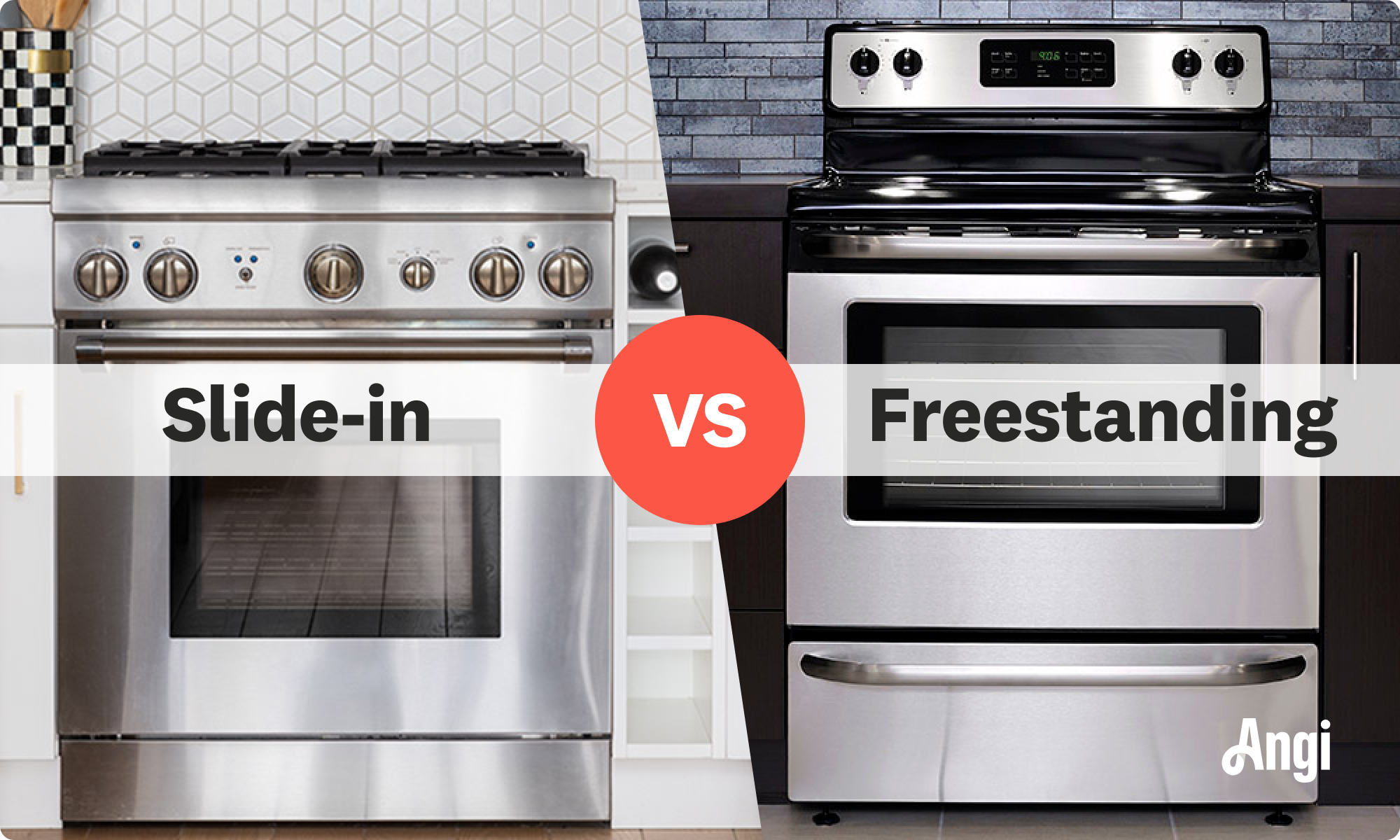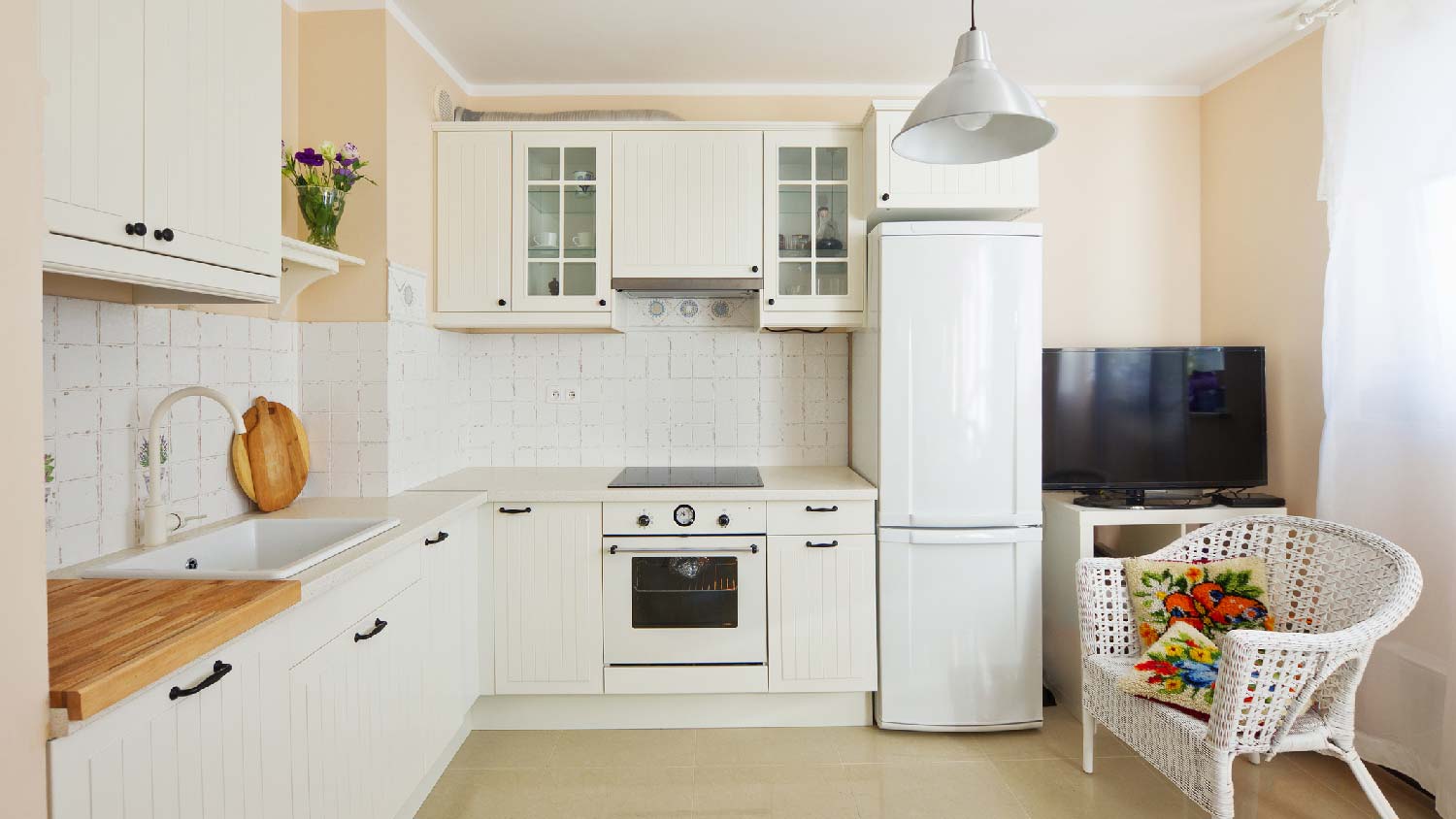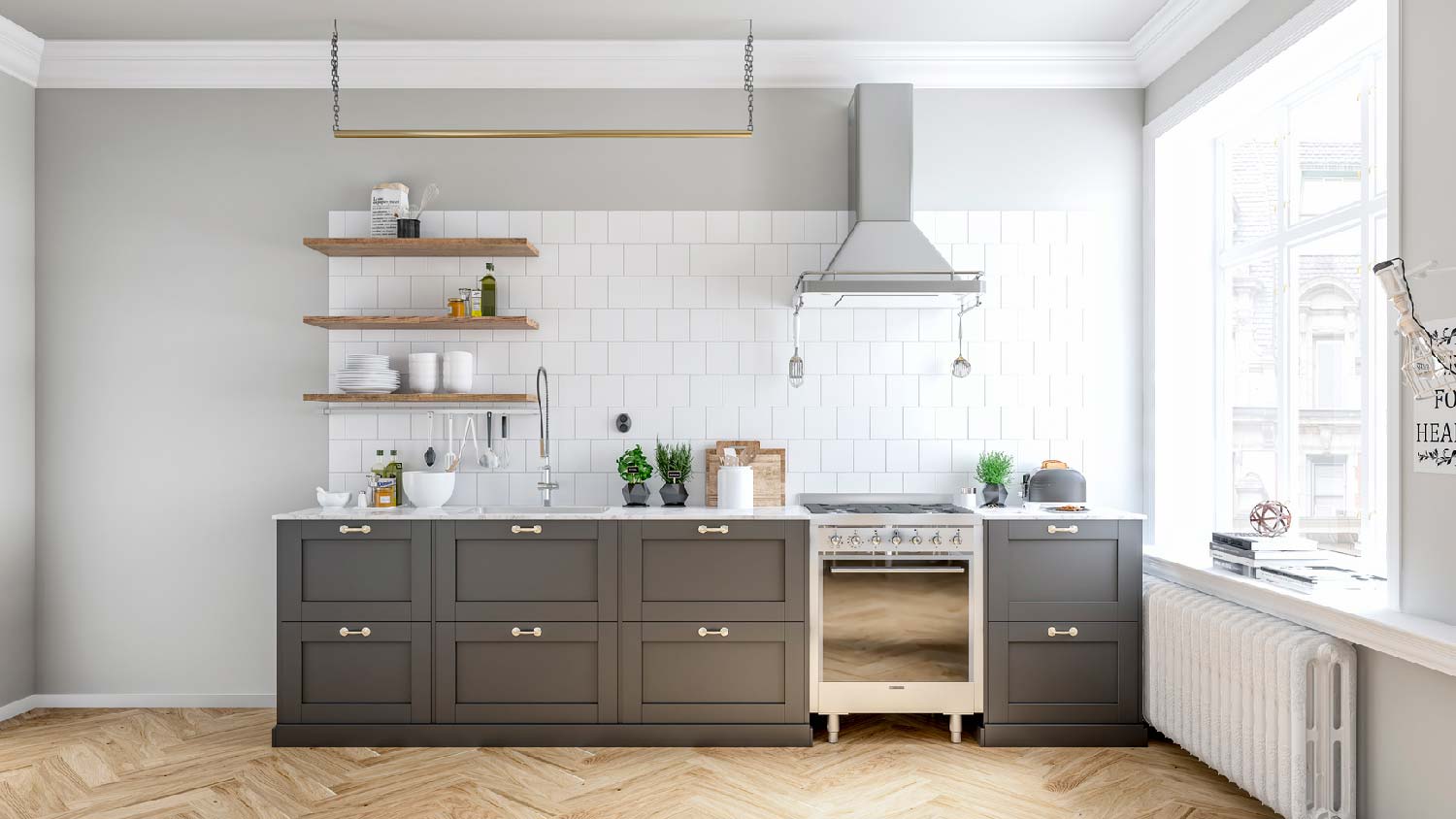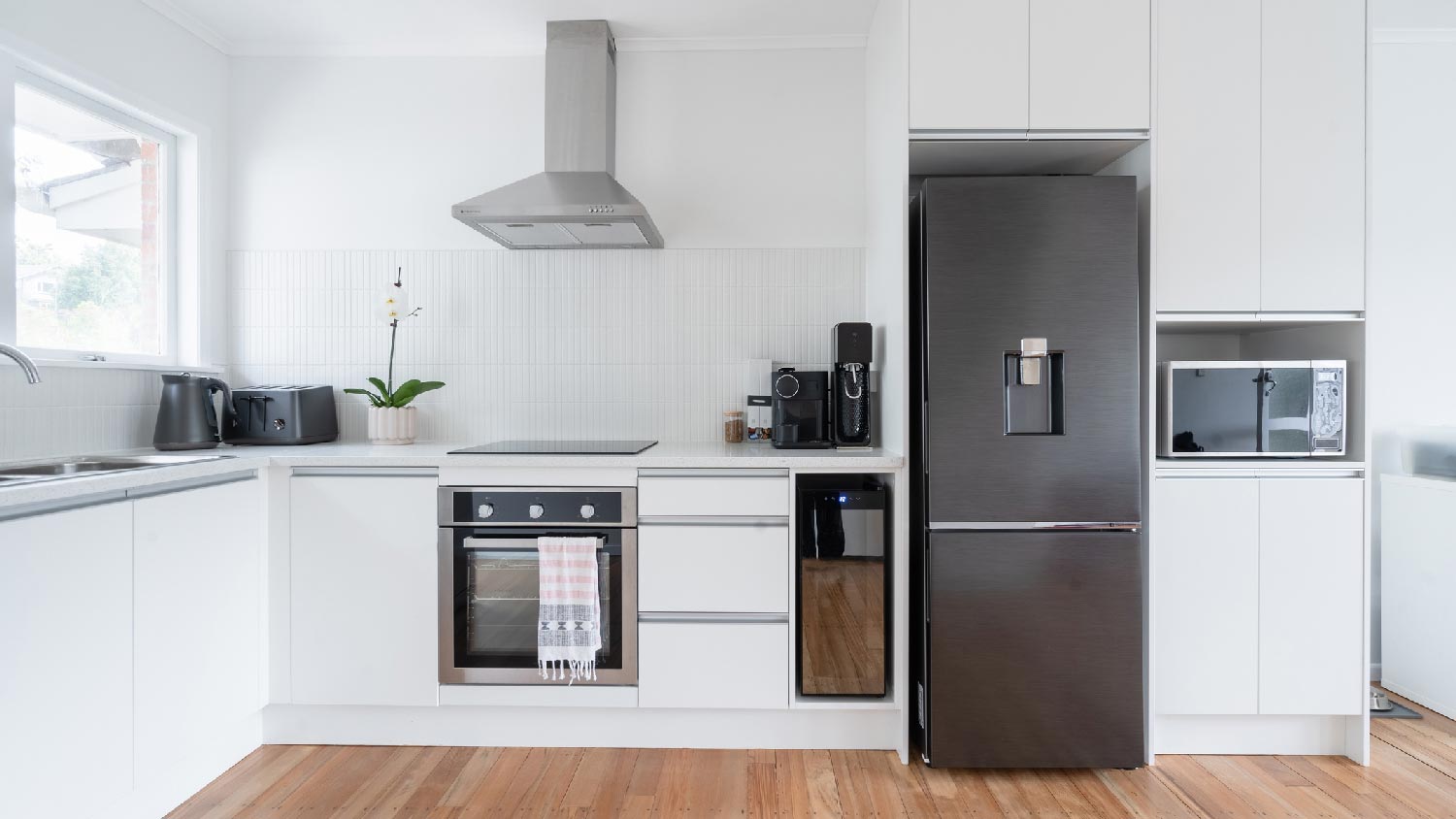
Get transparent refrigerator repair cost info. Learn what impacts price, compare repair vs. replacement, and find ways to save on your fridge repair.
Which range reigns supreme?


Slide-in ranges are installed to fit seamlessly into your cabinetry.
Freestanding ranges can be placed anywhere in your kitchen.
Slide-in ranges are more expensive and complicated to install.
Freestanding ranges collect dirt and grime more easily than slide-in ranges.
Both ranges are available as gas, electric, or dual-fuel.
Your oven is the heart of your kitchen, often responsible for the most memorable comfort meals, from roast chicken to vegetable lasagna. While your range is a utilitarian workhorse, it's important to choose one that complements your kitchen's aesthetics, layout, and maintenance preferences. Understanding the key differences between a slide-in and freestanding oven range is the first step in deciding which is right for your home.

The primary differences between freestanding and slide-in ranges are the installation processes and the locations of the controls. Slide-in ranges are meant to fit in within your cabinetry, while freestanding ranges are installed between cabinets or sit as a stand-alone appliance.
You can’t swap out a freestanding range with a slide-in range or vice versa. Slide-in ranges are designed to be installed seamlessly into the cabinetry with an overhanging cooking area, covering the back and side seams. Slide-in ranges do not sit flush with the wall—you can see a small area of countertop behind them. This is factored into the countertop design and production.
However, freestanding ranges are not designed to overlap with the countertop and slide all the way back against the wall. Because they have finished sides, they can be installed between two cabinets or at the end of your cabinetry row. Slide-in ranges have unfinished sides, so they cannot be installed at the end of the cabinets.
The control panel on freestanding ranges usually sits on a backguard, while slide-in ranges do not have a backguard, and all controls are located on the front of the unit. There are some freestanding ranges without backguards, which then have the controls on the front like slide-in ranges do. Even if you prefer this look, note that the backguard does have a purpose: it prevents heat, steam, and grease from getting onto your kitchen wall.
When shopping for units with front controls, consider ones with lockable controls. This will prevent you from accidentally turning the range on, which is especially useful if you have kids around.
Both ranges are available as gas, electric, or dual-fuel.

Slide-in ranges are intended to create a sleek, unified cabinetry look with the range integrated into the kitchen cabinets—the cooking surface overlaps with the countertop, and the front of the range covers the edges of the cabinets. These units do not have backsplash panels, which makes them a solid choice if you wish for your range to be installed in a kitchen island or against a wall that has a continuous backsplash. That said, they are able to be installed nearly anywhere in a kitchen; most have very common stove dimensions that cabinet designers and installers will know how to work with.
Note that many “slide-in” ranges sold today are actually freestanding ranges designed to mimic true slide-in ranges. These ranges will have front controls and no backguard, but finished sides. These days, very few manufacturers make true slide-in ranges. If you’re looking for one for your kitchen, confirm that it has unfinished sides and an overlapping cooktop.
| Pros | Cons |
|---|---|
| Seamless integration with cabinetry | Higher price point |
| Supports open-layout kitchen | Difficult to move once installed |
| Prevents dirt and debris build-up | Professional installation required |
| Downdraft ventilation available | More limited design options |
| FIT System guarantees |
Best for:
Homeowners who have or prefer an open kitchen layout
Homeowners who want a sleek, seamless look without cabinet seams
The main benefit of a slide-in range is that it fits seamlessly into kitchen cabinetry work, offering a sleek, uniform look. Because it is fitted into cabinetry, it also allows you to install it into a kitchen island, if you’re hoping for an open kitchen layout. Many manufacturers have FIT System guarantees that help cover any fees in case you are dissatisfied with how your range fits and want to make adjustments to your cabinet specifications.
Because the slide-in range is fitted into the cabinets with the cooking surface overlapping with the countertop, less dirt and debris can get stuck in those difficult-to-reach crannies that exist with freestanding ranges.
While slide-in ranges are sleek and easy to clean, they are also more expensive. They tend to be hundreds to thousands more than a comparable freestanding unit, and you’ll need to factor in the more expensive, costly installation process.
In addition, they aren’t for the indecisive. Since the slide-in range will be built into your cabinetry, plan on committing to your kitchen’s layout unless you want to spend even more money to remodel and move things around. Finally, note that there are overall fewer design options available for slide-in ranges than there are for freestanding units.

Freestanding ranges are available in gas or electric models. They feature a built-in backguard, which allows homeowners to install them as stand-alone units, in between cabinets, or at the end of a counter, leaving one side of the range exposed.
Freestanding range controls usually sit on the backguard.
| Pros | Cons |
|---|---|
| Flexible installation options | More complicated cleanup |
| Less expensive | Incompatible with open kitchen |
| Finished sides allow for end-of-cabinet placement |
Best for:
Homeowners on a budget
Those who need flexible, easy installation
For many people, the only choice is a freestanding range—that’s because they are significantly cheaper than built-in ranges, and don’t require complicated installation. Freestanding ranges, with their finished sides, can be placed anywhere in your kitchen, including at the end of a row of cabinets.
Because freestanding ranges don’t have to fit standard cabinet specifications, there are more styles available than built-in range units—what you might lose by foregoing a seamless kitchen aesthetic you could make up for by purchasing a freestanding range with lots of character.
While affordable, freestanding ranges simply don’t offer the streamlined, uniform kitchen look of slide-in ranges. They also make open kitchen designs more difficult, and some homeowners see them as more traditional (or even outdated) compared to the modern look of a slide-in range.
In addition, many homeowners don’t want to deal with the more complicated cleaning that comes with a freestanding unit, which can collect more dirt and debris on its open sides and back.

Let’s do a direct side-by-side comparison of these two range styles and see how they stack up. With all the facts to back you, the final decision will come down to your preferences and budget.
Both freestanding and slide-in ranges come in a range of styles and dimensions, with many magazine-worthy options available. Some homeowners may simply prefer the look of a uniform cabinet with the range built in, though this is a personal preference.
While both styles have a range of features and options, many slide-in ranges lack a useful stove part: storage/warming drawer. This drawer is useful for storing pots, pans, baking sheets, and more—drop-in ranges usually don’t have these drawers, as they need to fit seamlessly within the cabinetry.
Freestanding ranges are significantly cheaper. The appliance itself can be hundreds or even thousands of dollars less expensive, and there is minimal installation required. Built-in ranges, on the other hand, require extensive professional installation by a trusted, local appliance installation service, which can be costly.
Freestanding ranges can be placed nearly anywhere in your kitchen, except for inside of an island (though they can sit at the end of one, if you have the room). These ranges have finished sides, so they don’t look awkward if they are placed with one side facing out. Slide-in ranges, when installed, look
Slide-in ranges overlap with the cabinet surface, so less dirt and debris build up on the sides and on the back, leaving you with less to clean each week.
A slide-in range can make your kitchen look showroom-worthy, blending into the cabinetry in a uniform, sleep way. You can also choose to have a second oven or a convection oven installed into the wall cabinets, giving you (and any potential buyers) more flexibility in the kitchen. That said, most homeowners value well-reviewed, quality appliances, regardless of how they are installed.
From average costs to expert advice, get all the answers you need to get your job done.

Get transparent refrigerator repair cost info. Learn what impacts price, compare repair vs. replacement, and find ways to save on your fridge repair.

Depending on repair needs and machine age and type, the cost to replace a heating element in a dryer can vary. Learn the average repair costs.

Several factors impact dryer vent installation cost. Use this guide to learn what affects the cost, and how much you should budget for this project.

Wondering who to call to hook up a gas dryer? Call a licensed plumber or contractor to hook up your gas dryer and make sure it's venting properly.

Discover what your need to know about DIY or professional pellet stove installation with or without an existing fireplace.

How do wood stove fans work, and why do you need one? Learn how to boost your home’s heating efficiency with our comprehensive guide.